Full details including videos and sound samples can be found at https://treefallsound.com and the pi-Stomp wiki
Quick overview
pi-Stomp is a DIY platform for guitar, bass and keyboard processing.
The heart of the software is the open source MOD host/ui created by moddevices.com which allows you to create virtual pedalboards with up to ten or more simultaneous plugins.
Check out some sample pedalboards hear what they sound like here
Purchase the parts using our provided Bill of Materials. The total will be about $198 plus applicable tax and shipping. It does require at least intermediate soldering skills. But we've done our darndest to make it as easy as possible. You will be rewarded with a very powerful multi-fx platform that rivals many commercially available units (HX Stomp, Headrush, etc.). Better than those though, You built it. You can upgrade or modify the hardware. You can install whatever software/effects you want. If it runs on Linux, it'll likely run on pi-Stomp.
Demo
Background
Since you're reading this, you're likely a maker/hacker and a musician. You love to build and create. So what could be better than making awesome music using hardware (and maybe even software) that you built? That's been my dream for decades (read "experienced", not "old" ;-). Raspberry Pi and high def sound cards along with some open source software like LV2 (plugin format) and MOD/MODEP, have finally made such an endeavor possible.
The project started in Spring 2019. Although I had working prototypes within a few months, creating something that others can build is a lot of work. The industrial/mechanical design along with documentation has actually required way more effort than the electrical and software design. The latest circuit board is the 8th iteration. The last two public versions have been built successfully 12+ times by builders around the world. So this is a fairly mature project which I will continue to improve. Your help and ideas are more than welcome!
Hardware Specifications
- Raspberry Pi 1.4 Ghz 64-bit quad-core processor
- Dual ins/outs, 24-bit, 48 to 96kHz stereo audio
- Input Impedance: 1 Meg Ohm
- Latency: 2.67ms (128 frames/96kHz). 5.33ms if CPU load is reduced by changing sample rate to 48kHz or frames to 256.
- Three rugged click-less footswitches with LED halos (assignable per pedalboard)
- True bypass via latching relays
- MIDI control via 5-pin DIN (old style) input connector or USB
- Assignable Expression Pedal input and "Tweak" knob
- 2 encoders for menu navigation and control
- Output Volume control
- 128x64 backlit LCD
- Rugged custom aluminum powdercoated enclosure with UV printed graphics
Controlling pi-Stomp
pi-Stomp offers powerful and very flexible control via the onboard knobs and footswitches, but you can also control it externally to enable/disable specific effects, control wah, pitch-shift and any parameter of any plugin. All controllers (including the onboard) simply send a MIDI CC message. Each unique messages can be mapped (per pedalboard) to control whatever you want it to.
Architecture
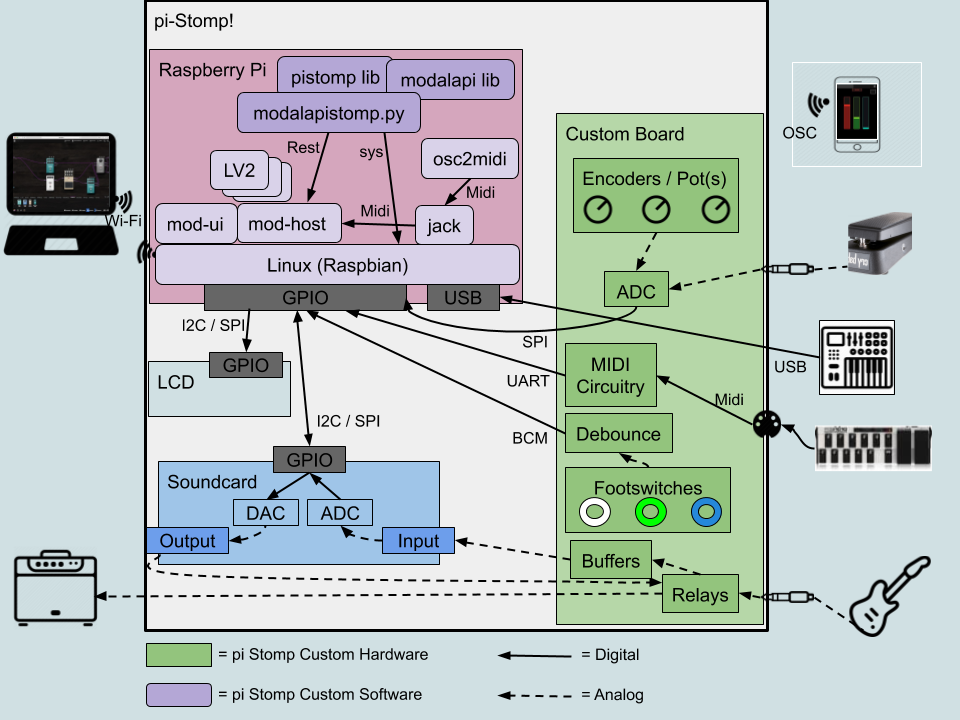
If you made it this far and still want to learn more, just visit the wiki. Thanks for your interest!
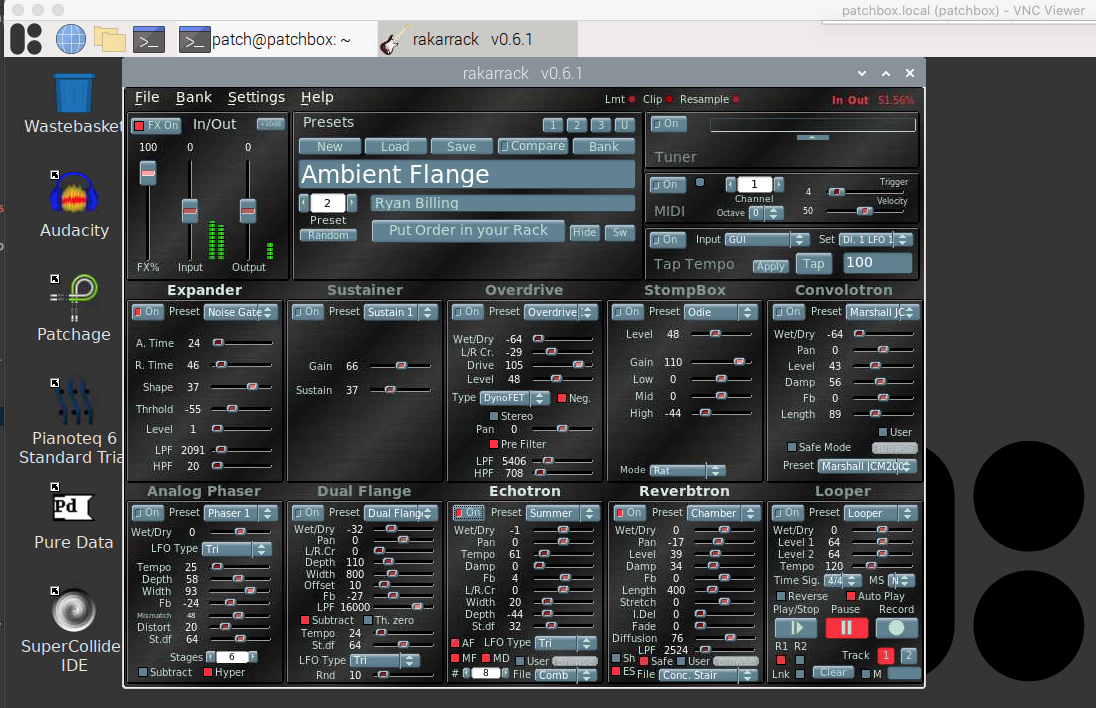

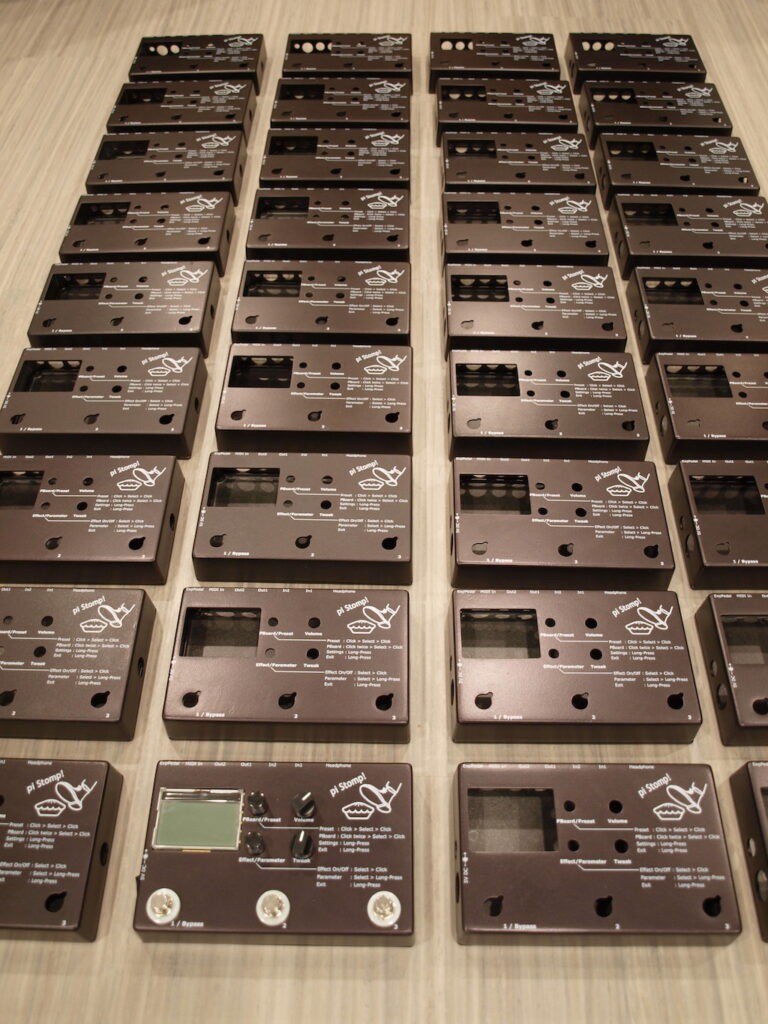
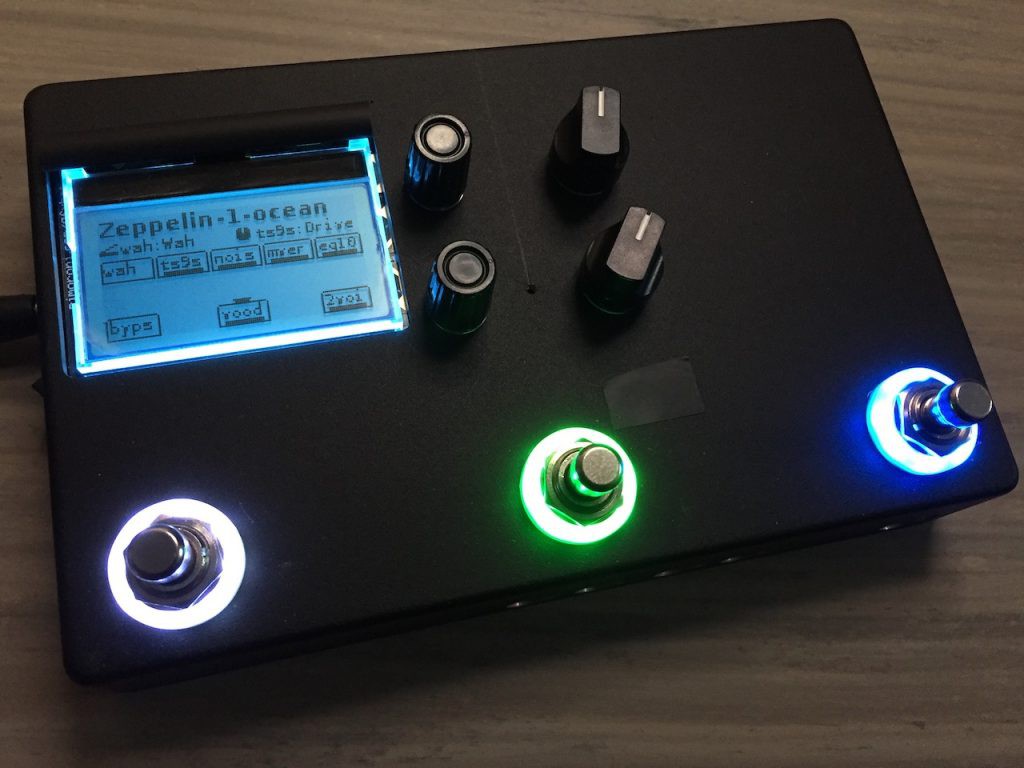
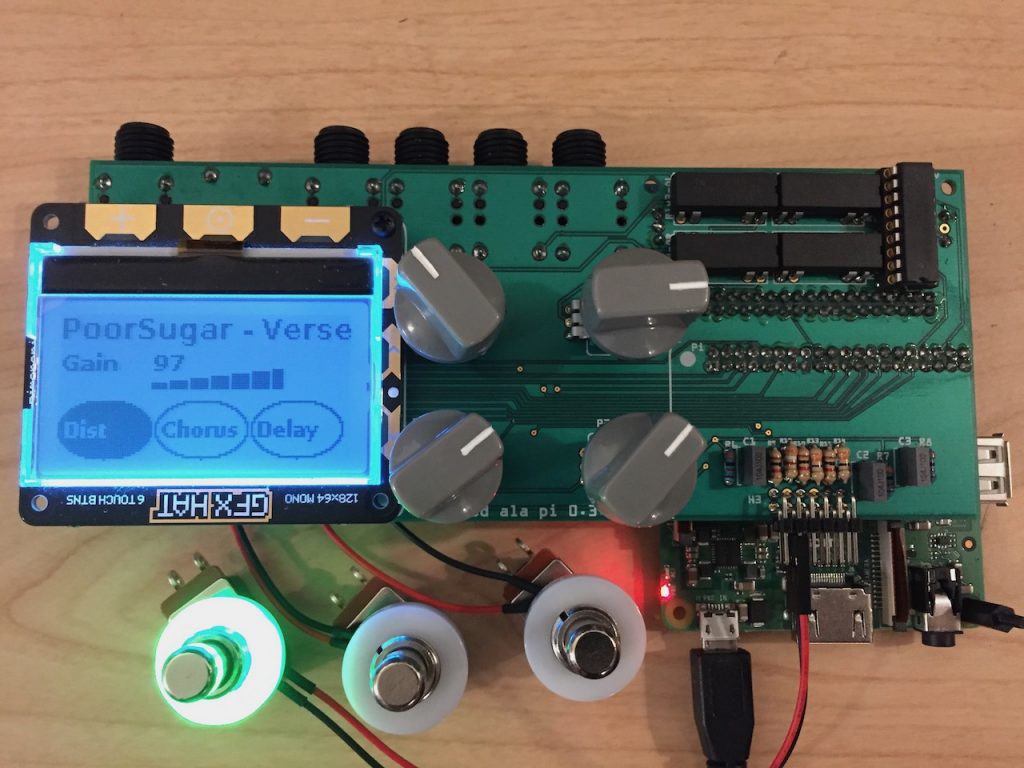
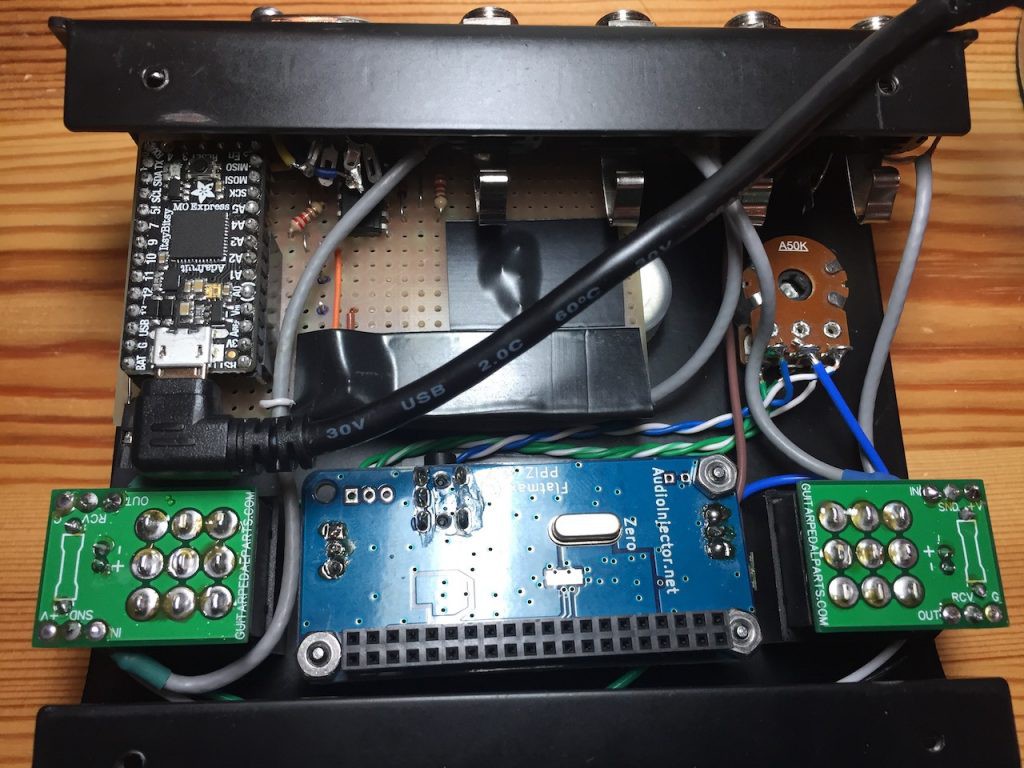


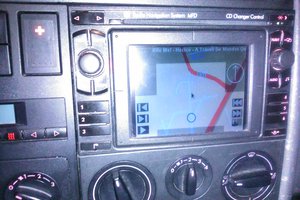
 Robert Pohlink
Robert Pohlink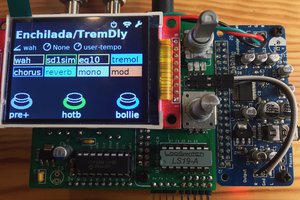
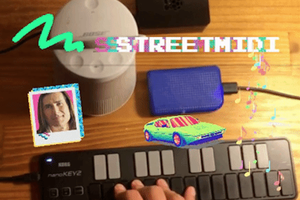
 Isaac Wellish
Isaac Wellish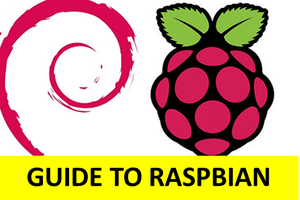
 Dmitry
Dmitry
Latency compared to commercial solutions ?